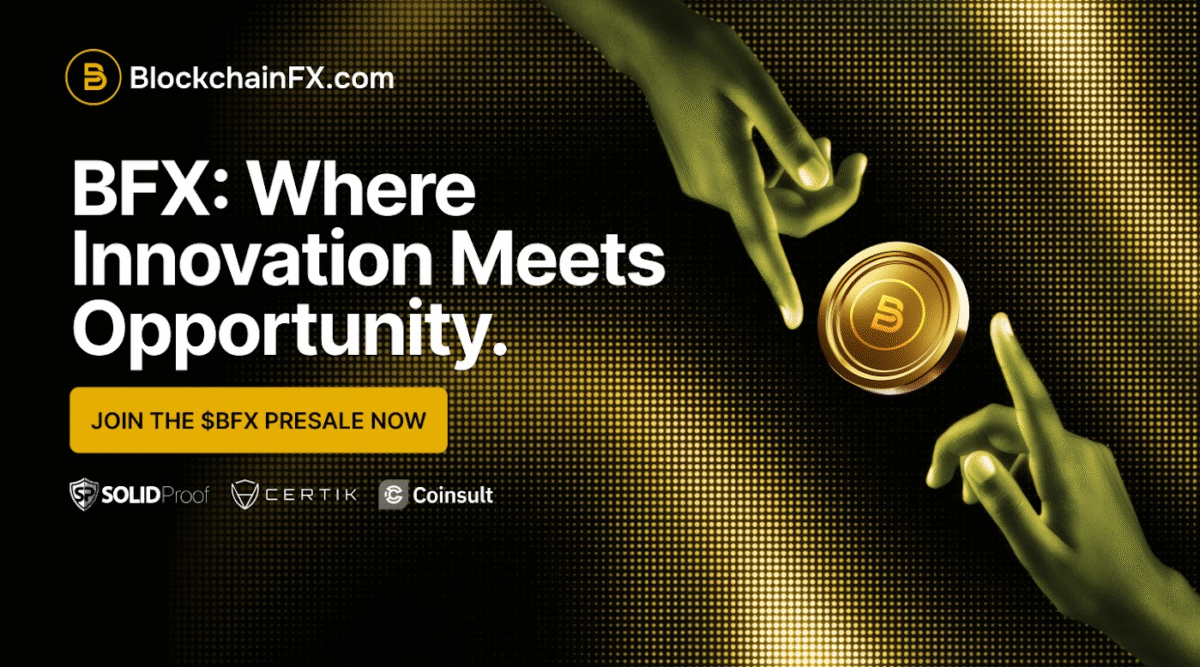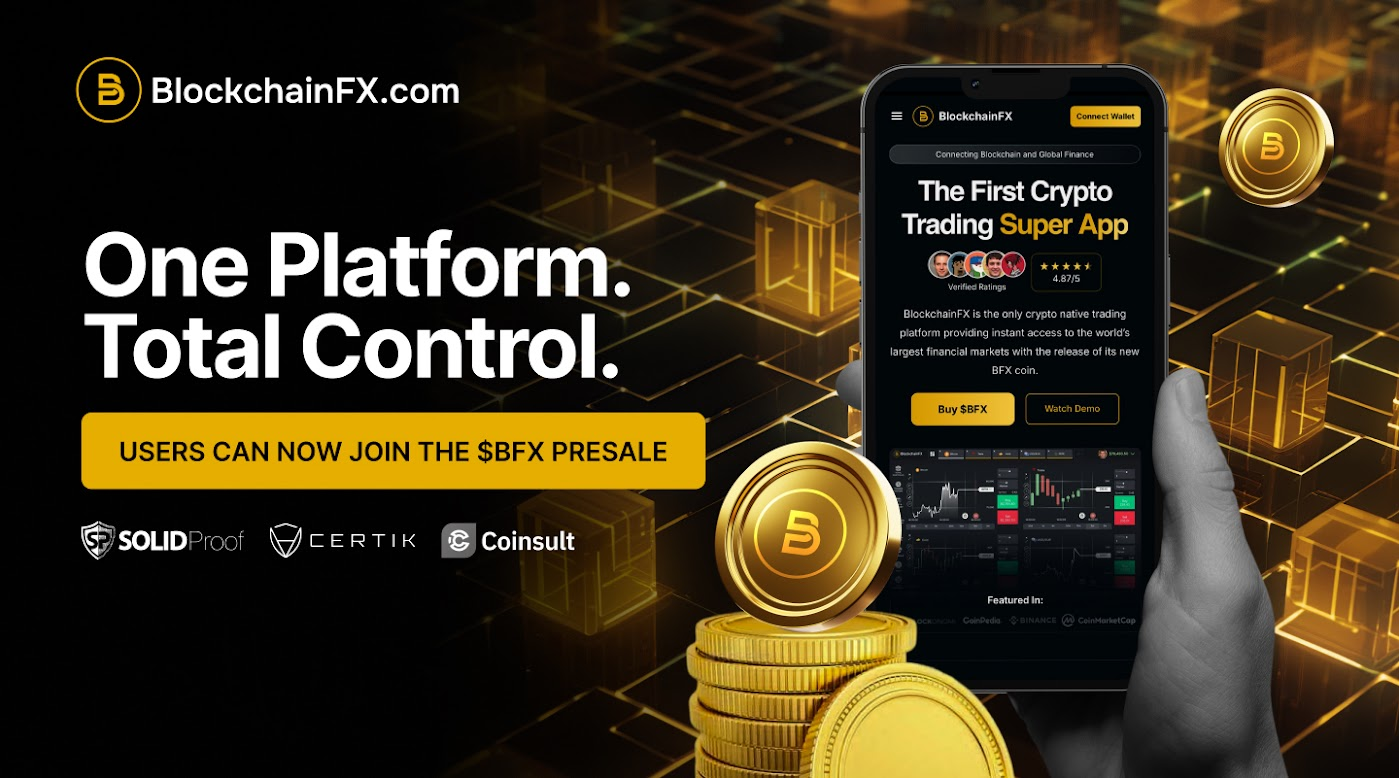In a maturing crypto landscape, projects that blend decentralised finance with cross-market utility are beginning to stand out. BlockchainFX (BFX) is one of the newer entrants drawing attention for its multi-asset design — a framework that aims to let users trade cryptocurrencies, stocks, forex, and exchange-traded funds within a single decentralised environment.
Ethereum and Polkadot have shaped much of today’s blockchain architecture. Yet as both networks grapple with scalability and interoperability challenges, developers and market analysts are watching how emerging platforms such as BlockchainFX adapt to current demands for speed, lower costs, and asset diversity.
Ethereum’s Network Dominance Meets Growing Costs
Ethereum remains the backbone of decentralised finance and smart contracts. Its transition to proof-of-stake improved energy efficiency and reduced block-time variance, but network congestion continues to drive up gas fees during high-activity periods. For new decentralised apps and smaller projects, those costs can limit accessibility.
BlockchainFX’s design looks to approach scalability differently. By separating transaction types across asset classes and using on-chain fee redistribution, it targets smoother throughput for a wide range of financial instruments. Analysts view this as an experiment in combining Web3 trading with structures more familiar to traditional markets.
Polkadot’s Interoperability Vision and Its Limits
Polkadot was built to connect blockchains through its parachain model, a milestone in interoperability. The network’s auction system has drawn numerous specialised projects, but maintaining participation requires substantial developer and financial resources. Some analysts suggest that while Polkadot’s framework is powerful, its complexity may deter mainstream adoption.
BlockchainFX pursues a simpler connection point — one decentralised interface through which users can move between crypto and non-crypto markets. Instead of creating new chains, it integrates data feeds and liquidity from existing sources, aiming for ease of access rather than technical breadth.
What Is Driving The BFX Presale Success?
One of the most examined components of BlockchainFX is its staking and fee-sharing system. Seventy percent of all trading fees are earmarked for staking pools, buybacks, and token burns; 50 percent of collected fees go directly to stakers, and half of repurchased tokens are permanently removed from circulation. The structure caps rewards to manage inflation risk while using burn events to reduce supply over time.
If successful, this type of self-contained economy could demonstrate how decentralised platforms might fund operations and incentivise users without external inflationary pressures.
The very nature of its presale also warrants an exploration. Its pricing tiers are designed to reward early buyers with gains, as the completion of each stage of the presale results in a price climb, until it eventually arrives at the market launch price of $0.05. Right now, the BFX token is trading for $0.028, positioning early investors with the opportunity for significant gains. There is also a time-limited 30% bonus on tokens if buyers use the BLOCK30 code.
Integrating Multiple Markets Is At the Core Of The Super App
By linking digital assets with traditional instruments such as equities and ETFs, BlockchainFX represents a shift toward “multi-asset DeFi.” This broader approach contrasts with Ethereum’s application-specific deployments or Polkadot’s inter-chain specialisation. The platform’s architects describe it as a decentralised super-app — a single hub for trading, staking, and portfolio management.
Whether this concept gains traction will depend on execution and regulatory clarity, but it illustrates a growing appetite for merging decentralised infrastructure with conventional finance.
Bridging Digital and Real-World Utility
BlockchainFX’s planned Visa card, available only to early community members, reflects another current in crypto development: extending blockchain rewards into everyday transactions. The card is expected to support multiple currencies and direct spending of staking proceeds. Similar initiatives across the industry show how blockchain projects are moving beyond speculation toward real-world integration.
The Competitive Outlook
Ethereum’s dominance and Polkadot’s interoperability network are unlikely to disappear. Yet BlockchainFX highlights how new projects are tailoring systems to meet an evolving user base that expects speed, simplicity, and cross-market access. If it can maintain security and transparency while scaling, it may contribute to a more interconnected era of decentralised finance.
Website: https://blockchainfx.com/
X: https://x.com/BlockchainFXcom
Telegram Chat: https://t.me/blockchainfx_chat
Disclaimer: This media platform provides the content of this article on an "as-is" basis, without any warranties or representations of any kind, express or implied. We assume no responsibility for any inaccuracies, errors, or omissions. We do not assume any responsibility or liability for the accuracy, content, images, videos, licenses, completeness, legality, or reliability of the information presented herein. Any concerns, complaints, or copyright issues related to this article should be directed to the content provider mentioned above.







